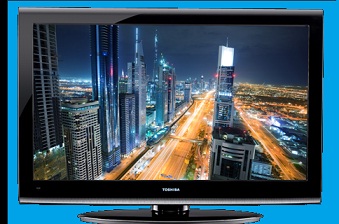Buying an LCD television can be a jaunting task if you don’t know what to look for. Too many people choose their LCD strictly based on size or cost, which can lead to a poor purchase decision. Let’s look at five of the most important factors to consider when choosing your LCD TV.
Size:
The bigger the better, right? Wrong. It’s important to consider where your LCD is going to be placed and how much room you’ll have. Otherwise you‘ll find the experience less pleasurable.
As a rule of thumb, if you’re going to be sitting less than five feet away from your set, your maximum size should be around 27-inches. For every five inches up you want to give yourself at least an additional two feet distance. So if you’re really considering that 70-inch behemoth, make sure you’re sitting back at least sixteen feet.
3D Compatibility:
Is it worth it to have 3D compatibility? Keep in mind that there are relatively few titles available, and even less television programming available in 3D. Although it was introduced with much fanfare, it really hasn’t taken off as expected, and it should be considered more a luxury than a need.
Keep in mind that each person watching will need their own pair of glasses. So if you frequently watch movies with guests over, you’ll likely need to add the extra expense of additional glasses.
Internet Ready:
Newer models are now capable of streaming content over the Internet using services such as YouTube and Netflix. Newer services are becoming available, some of which are free, and having an Internet-ready set will give you more viewing options and may even let you save money by cutting cable.
Connectivity:
Most devices now use the HDMI standard for connectivity, and your model will likely have these already. It would be a good idea though to check how many slots are available if you have a number of devices to hook up. For older devices, check that your set has component-video and composite connections as well.
If you plan on using your LCD television as an external monitor for your computer, you may need to use DVI. Also, if you plan to hook up the Internet but want to avoid wireless lag, check if the set has an ethernet input.
Width:
Newer models now try to demonstrate how thin their profile is. Consider whether it’s really worth the expense and potentially less than ideal viewing. Thin LCDs are known to have uniformity issues where parts of the screen appear brighter than others.
We’ve looked at several factors when considering your next LCD television, and you should now know precisely what to consider prior to your purchase.



